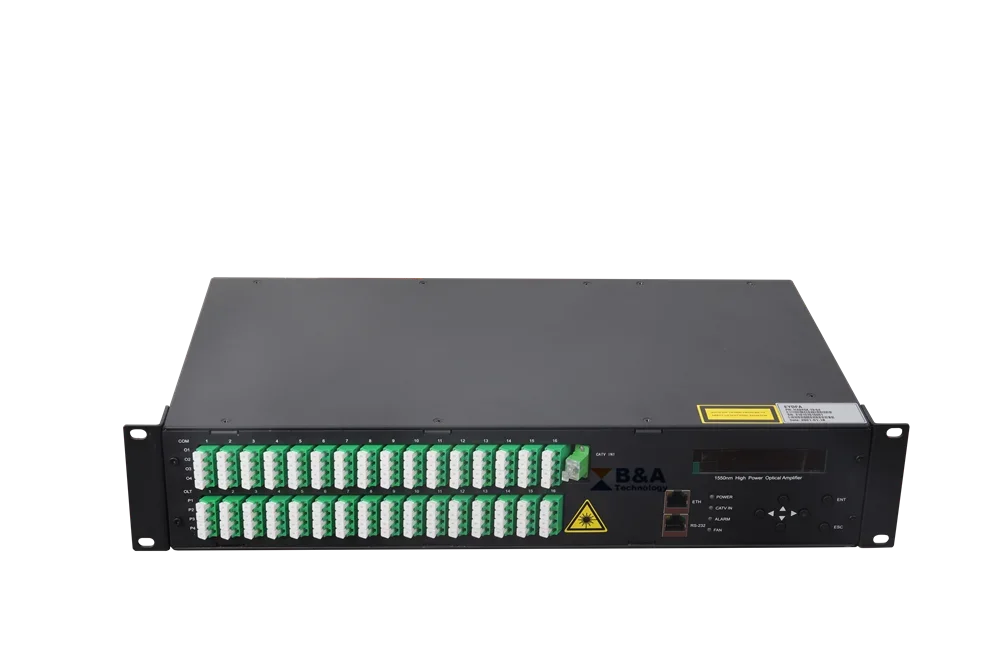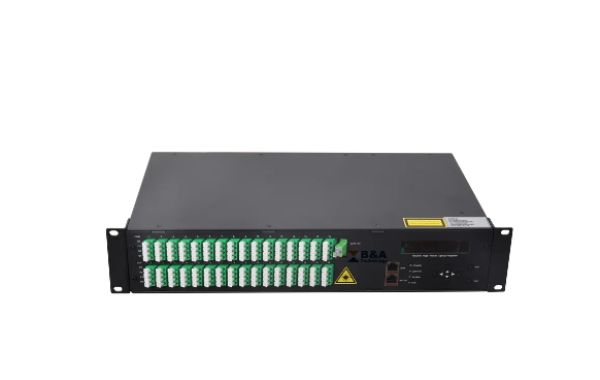Are you looking for a way to boost your optical signal without sacrificing quality? Look no further than a high power optical amplifier! With so many different options available, it can be overwhelming trying to choose the right one for your specific application. In this blog post, we'll break down everything you need to know in order to confidently select the perfect high power optical amplifier for your needs. Whether you're a seasoned pro or just starting out in the field, this comprehensive guide has got you covered. So let's dive in and discover how to take your optical signals to new heights!
What is an optical amplifier?
An optical amplifier is a device used to increase the strength of an optical signal. It works by using stimulated emission, which involves exciting atoms within the medium to release additional photons that are in phase with the original signal. This results in amplification without distorting or degrading the original signal quality.One key advantage of optical amplifiers is their ability to amplify signals across a wide range of frequencies, making them ideal for use in telecommunications and other high-speed data transmission applications.There are several different types of optical amplifiers available, each with its own unique strengths and weaknesses. Some popular options include erbium-doped fiber amplifiers (EDFAs), raman amplifiers, and semiconductor optical amplifiers (SOAs).The main benefit of using an optical amplifier is its ability to boost signal strength while maintaining high quality and fidelity. Whether you're working on a complex telecommunications project or simply need to improve your network performance, incorporating a high power optical amplifier into your setup can help take your system to new heights!

Features of High Power Optical Amplifier
High power optical amplifiers are designed to amplify the strength of an optical signal. These amplifiers have a broad range of features that make them ideal for various applications, such as telecommunications and industrial processing.One of the primary features of high power optical amplifiers is their ability to operate at high output powers without distorting or degrading the quality of the amplified signal. They also have excellent efficiency levels and can deliver high gains over a broad wavelength range.Another significant feature is their compact size, which makes them easy to integrate into existing systems or equipment. High power optical amplifiers are typically built with advanced technologies like erbium-doped fiber amplifier (EDFA) or Raman amplifier technology, enabling them to provide superior performance compared to traditional electronic amplification methods.These devices also have robust thermal management systems in place that allow them to perform optimally even under harsh environmental conditions like extreme heat or cold.Many high-power optical amplifiers come equipped with advanced diagnostic capabilities like real-time monitoring and fault detection systems that enable users to diagnose issues quickly and minimize downtime during maintenance activities.Whether you're looking for precise control over your signals' quality or need reliable performance in harsh environments, high-power optical amplifiers offer an array of features that make them an attractive choice for a wide range of applications.
What are the different types of optical amplifiers?
There are several types of optical amplifiers available in the market, each with its unique features and benefits. The most common ones are erbium-doped fiber amplifiers (EDFAs), Raman amplifiers, and semiconductor optical amplifiers (SOAs).EDFAs use a special type of fiber doped with erbium ions to amplify signals in the C-band range. They offer high gain and low noise figure, making them ideal for long-haul communication systems.Raman amplifiers work by using stimulated Raman scattering to transfer energy from an input signal to a pump laser. This process allows for broad bandwidth coverage and improved performance over longer distances.SOAs, on the other hand, use semiconductors as their active medium instead of fibers or rare-earth elements. They offer fast response times and can be easily integrated into optoelectronic circuits.Other types of optical amplifiers include hybrid amplifier modules that combine different technologies for optimal performance, as well as pre-amplification units used in conjunction with receivers to improve system sensitivity.Choosing the right type of optical amplifier depends on various factors such as application requirements, operating conditions, budget constraints etc.

How to choose the right optical amplifier for your application?
Choosing the right optical amplifier for your application can be a daunting task, especially if you are not familiar with the different types of amplifiers available in the market. Here are some factors to consider when choosing an optical amplifier:You need to determine the required gain and output power needed for your application. This will help narrow down your options as different amplifiers have varying gains and output powers.Consider the noise figure of the amplifier. A lower noise figure means better performance, but it also comes at a higher cost.Look into whether you need a pre-amplifier or power amplifier depending on where in your system it will be placed.Fourthly, examine what wavelength range is needed for your specific application as different amplifiers have different ranges they can work within.Check if any additional features like automatic power control or built-in monitoring capabilities would be beneficial for your particular setup.Considering these factors should help guide you towards selecting an appropriate high-power optical amplifier that suits your needs best.

Conclusion
Choosing the right high power optical amplifier for your application can be a daunting task, but it's an important decision that can have significant impacts on your system performance. With so many different types of amplifiers available, each with their own unique features and characteristics, it's essential to carefully consider your specific needs before making a purchase.Take the time to understand the various types of optical amplifiers and their strengths and weaknesses, as well as the key features you need in an amplifier for your particular application. Whether you're looking for high output power or low noise figure, there is sure to be an amplifier that meets your requirements.By following these guidelines and doing thorough research before making a purchase, you can ensure that you choose the right high power optical amplifier to meet all of your needs. So take some time to evaluate all of the options available today and make a smart investment in optimizing your system performance!If you have any need,welcome to contact us.sales@baphoton.com








